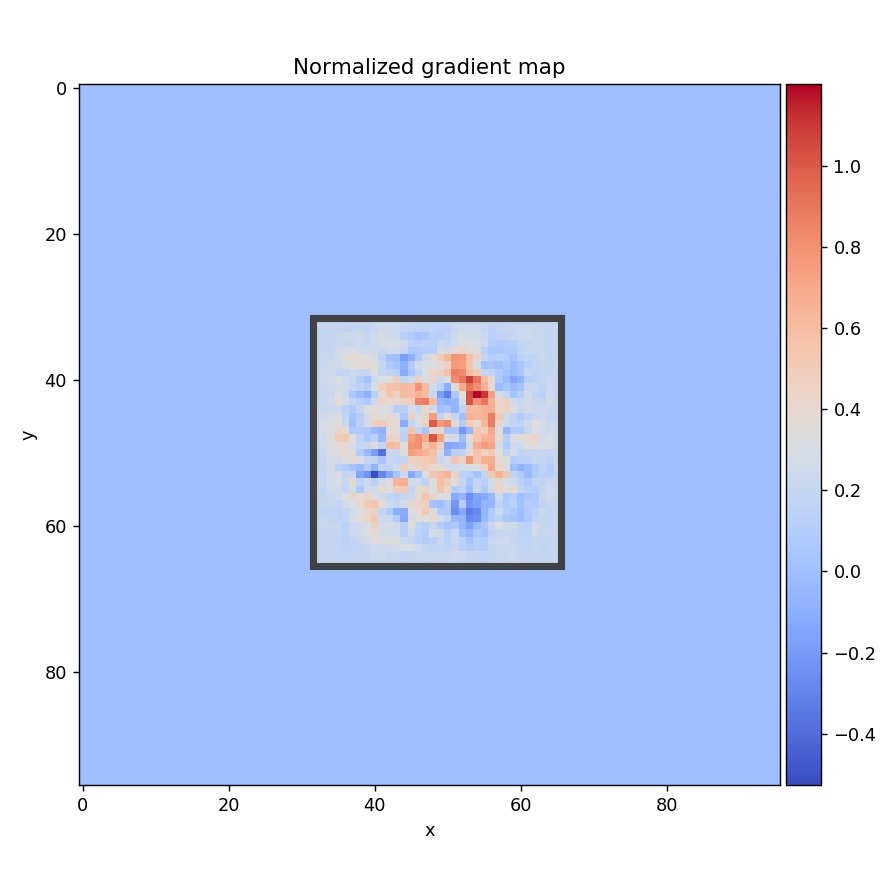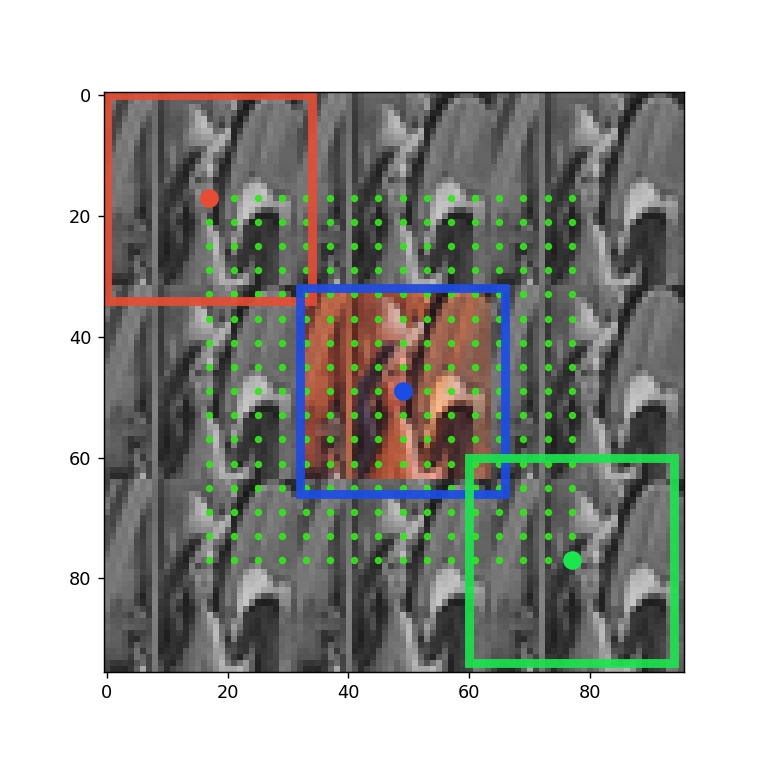Gradient based receptive field estimation for Convolutional Neural Networks. receptivefield uses backpropagation of the gradients from output feature map to input image in order to estimate the size (width, height), stride and offset of resulting receptive field. Numerical estimation of receptive field can be useful when dealing with more complicated neural networks like ResNet, Inception (see notebooks) where analytical approach of computing receptive fields cannot be used.
pip install receptivefieldinside the project.
-
In order to get better results or even avoid NaNs in the estimated receptive field parameters, it is suggested to use
Linear(insteadRelu) activation andAvgPool2Dinstead ofMaxPool2D. This improves gradient flow in the network and hence better signal in the input image. Note, that this is required only for RF estimation. -
Additionally, one may even initialize network with constant positive values in all weights (positive if max pooling is used) and set biases to zero. In case of Keras API this can be obtained by setting
init_weight=Truein theKerasReceptiveField(init_weight=True)constructor.
Currently only Keras API is supported. However it should be possible to extend receptivefield functionality by deriving abstract class ReceptiveField in base.py file. Here we show how to estimate effective receptive field of any Keras model.
- Create model build_function which returns model. This function
should accept one parameter
input_shape.
from keras.layers import Conv2D, Input
from keras.layers import AvgPool2D
from keras.models import Model
def model_build_func(input_shape):
activation = 'linear'
padding='valid'
inp = Input(shape=input_shape, name='input_image')
x = Conv2D(32, (5, 5), padding=padding, activation=activation)(inp)
x = Conv2D(32, (3, 3), padding=padding, activation=activation)(x)
x = AvgPool2D()(x)
x = Conv2D(64, (3, 3), activation=activation, padding=padding)(x)
x = Conv2D(64, (3, 3), activation=activation, padding=padding)(x)
x = AvgPool2D()(x)
x = Conv2D(128, (3, 3), activation=activation, padding=padding)(x)
x = Conv2D(128, (3, 3), activation=activation, padding=padding, name='feature_grid')(x)
model = Model(inp, x)
return model- Check if model is building properly:
model = model_build_func(input_shape=(96, 96, 3))
model.summary()_________________________________________________________________
Layer (type) Output Shape Param #
=================================================================
input_image (InputLayer) (None, 96, 96, 3) 0
_________________________________________________________________
conv2d_1 (Conv2D) (None, 92, 92, 32) 2432
_________________________________________________________________
conv2d_2 (Conv2D) (None, 90, 90, 32) 9248
_________________________________________________________________
average_pooling2d_1 (Average (None, 45, 45, 32) 0
_________________________________________________________________
conv2d_3 (Conv2D) (None, 43, 43, 64) 18496
_________________________________________________________________
conv2d_4 (Conv2D) (None, 41, 41, 64) 36928
_________________________________________________________________
average_pooling2d_2 (Average (None, 20, 20, 64) 0
_________________________________________________________________
conv2d_5 (Conv2D) (None, 18, 18, 128) 73856
_________________________________________________________________
feature_grid (Conv2D) (None, 16, 16, 128) 147584
=================================================================
Total params: 288,544
Trainable params: 288,544
Non-trainable params: 0- This step is not required but it is useful to plot results in the example image. For instance you would like to see what is the size of network receptive field in comparision to some objects you wish detect (or localize) by this network.
from receptivefield.image import get_default_image
import matplotlib.pyplot as plt
# Load sample image of `Lena`.
image = get_default_image(shape=(32, 32), tile_factor=1)
plt.imshow(image)- Compute receptive field of the network by calling
rf.compute
from receptivefield.keras import KerasReceptiveField
rf = KerasReceptiveField(model_build_func, init_weights=False)
rf_params = rf.compute(
input_shape=image.shape,
input_layer='input_image',
output_layer='feature_grid'
)
print(rf_params)- The resulting receptive field is:
ReceptiveFieldDescription(offset=(17.0, 17.0), stride=(4.0, 4.0), size=Size(w=34, h=34))-
Input shape:
rf.input_shape==GridShape(n=None, w=96, h=96, c=3) -
Output feature map shape:
rf.output_shape==GridShape(n=None, w=16, h=16, c=1). Note, that number of channels in the output feature map is set to 1 but this is used internally byreceptivefield. -
You may want to see how gradients backpropagate to the input image. Here
point=(8, 8)refers to the (W, H) position of the source signal from the output grid.
rf.plot_gradient_at(point=(8, 8), image=None, figsize=(7, 7))- Or even plot whole receptive field grid:
rf.plot_rf_grid(custom_image=image, figsize=(6, 6))- In the above, the red rectangle corresponds to the area which top-left grid point is seeing in the input image. Blue rectangle corresponds to the central grid point, green to the bottom-right point. Green dots show the position of the centers of the grid anchors in the source image.


